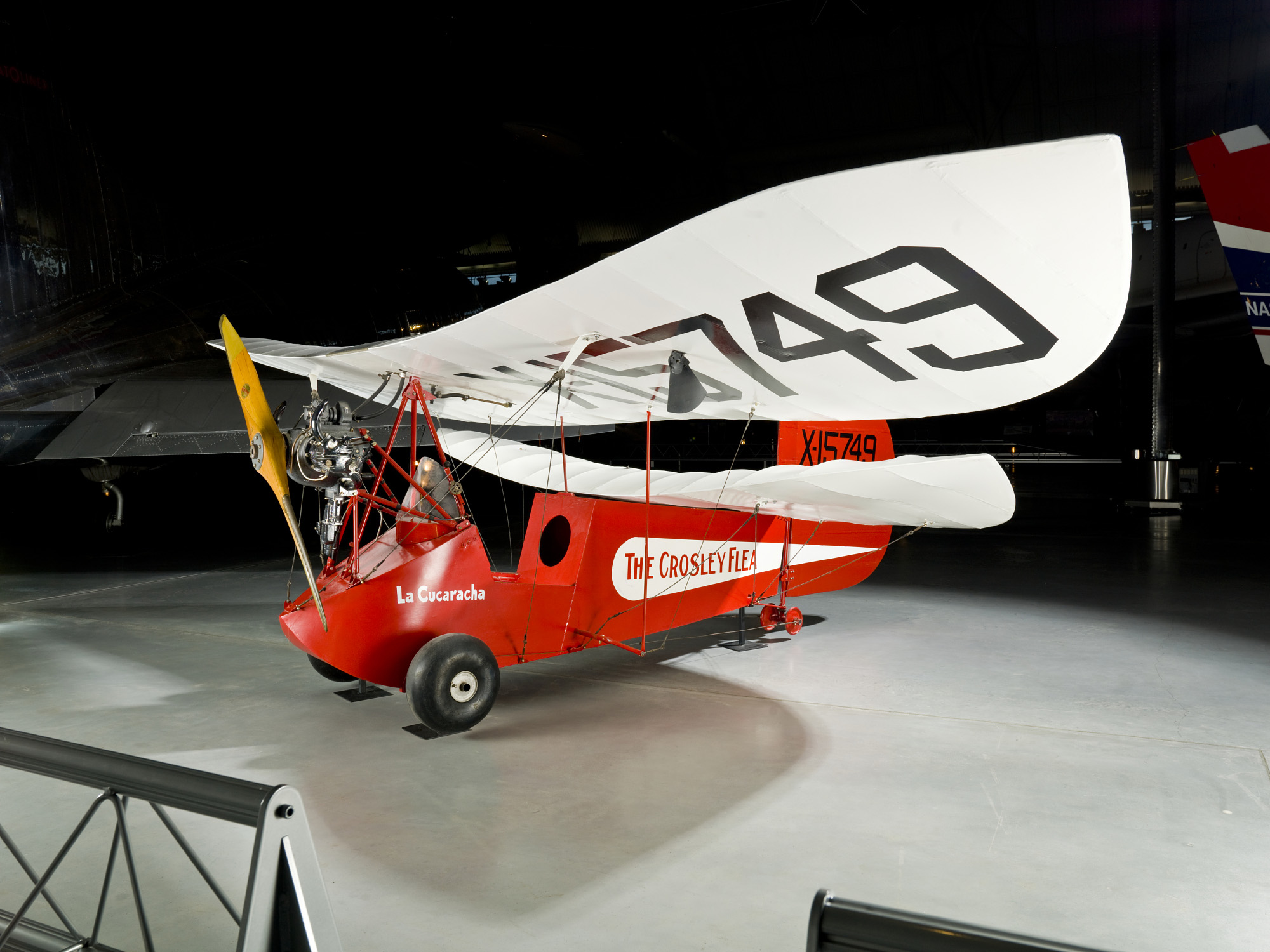By the mid-1920s aviation was no longer solely the province of the professional. The man (and woman) on the street desperately wanted to get in on it. Barnstormers, airmail pilots, adventurers, record-setters, air racers, military aviators: Their airplanes were big, expensive, dangerous and difficult to fly. Most were basically World War I dinosaurs slightly updated.
Henri Mignet, a French electrical engineer whose specialty was vacuum tubes, adored airplanes. “Oh, how beautiful is aviation!” he wrote in 1928. “To fly! To live as airmen live! Like them ride the skyways from horizon to horizon, across rivers and forests!” Mignet wanted in the worst way to fly.
In fact he did so, logging some 30 hours of instruction in a big Potez biplane owned by a friend who had been a World War I instructor pilot. But he claimed that the Potez terrified him. He found controlling an airplane in three axes with ailerons, rudder and elevator to be counterintuitive, and Mignet admitted that he was leery of overbanking. He consequently cross-controlled all his skidding turns, thus risking the dreaded stall/spin. “Today, [the airplane] is strong and perfected, but it still falls into a spin. The stall, the origin of the spin, is the Sword of Damocles suspended over the head of all aviators.”
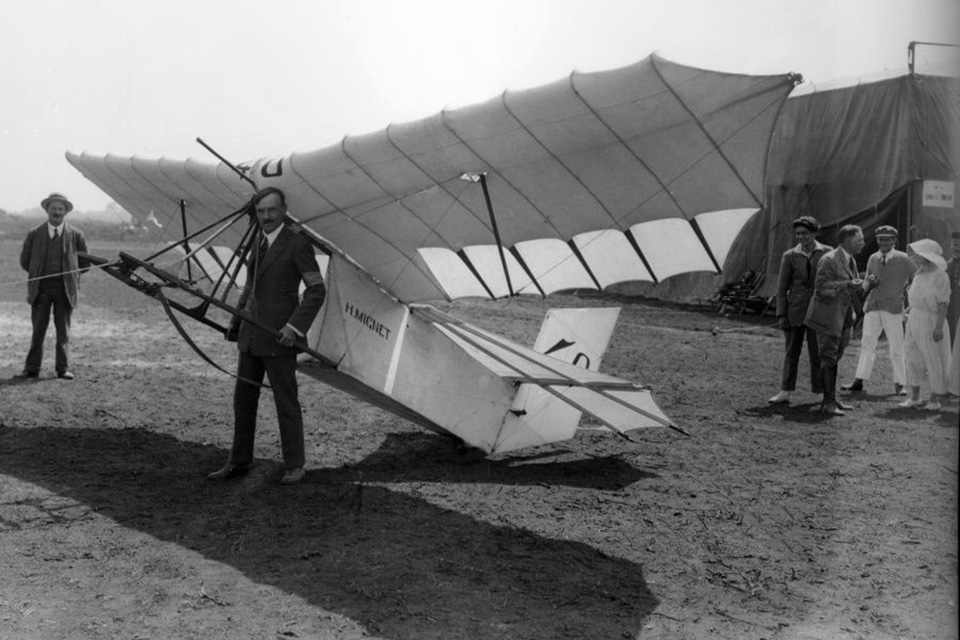
Mignet’s contemporaries, however, say that he was in fact a good pilot. He also often presented himself as “a man of routine… giddy at the top of a ladder…no wish to risk my neck…a plain ordinary man…an aeroplane frightens me…no pilot…not an engineer….” It was all nonsense. He was a canny innovator, a trained engineer (albeit not in aerodynamics) and a brave test pilot. He was simply doing some smart marketing for the super simple stall- and spin-proof airplane that he had invented: the Pou du Ciel.
That was indeed the name he gave it—“Louse of the Sky”—for he described it as “a small insect which has made people scratch their heads.” He was hinting at the bafflement with which conventional aviators viewed his design principles. Enthusiastic British acolytes at least called the Mignet airplane a “Flying Flea,” which is what the design and its descendants have been called ever since.
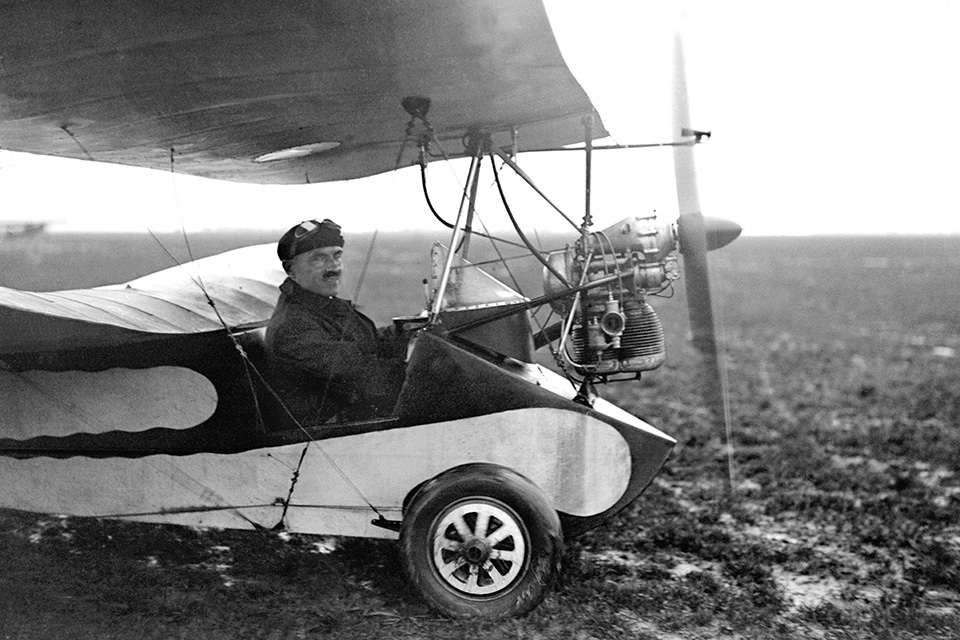
The Pou was tiny, hardly bigger than the child’s pedal-car that it strongly resembled. It was so simple to build that Mignet claimed, “If you are able to nail together a packing case, you are able to build the Flying Flea.” Mignet always intended to manufacture his design by the thousands, but as events worked out, he instead became the world’s first successful homebuilt-airplane entrepreneur. His book Le Sport de l’Air, which was translated into English, included complete construction drawings and howto details for homebuilding the original Pou du Ciel, and hundreds of dreamers in continental Europe, Britain, Australia and New Zealand immediately began construction. In the United States, Powell Crosley, head of the Crosley Radio Corporation, assigned his personal pilot to build the “Crosley Flea,” a Mignet HM-14—its official type designation—that survives to this day in the Smithsonian’s National Air and Space Museum.
The Flea’s fuselage was indeed pretty much an open-topped packing case—it has also been described as a coffin—with a short triangular tail cone, a huge rudder for stability and a pair of simple wings. Its small motorcycle engine sat atop a tripod above the nose, and everything including the pilot was out in the open air. The tiny airplane was at the time unique in having a single control—just a stick. There were no rudder pedals, and absolutely no ailerons or elevator for the stick to deflect.
The Pou had two wings, like a biplane; the upper one was conventionally located above the cockpit, but the lower wing was way back by the tail, like an enormous horizontal stabilizer. (The empennage otherwise consisted of just the rudder.) The forward wing pivoted, so that its angle of incidence—the angle between the wing’s chord-line and the longitudinal centerline of the fuselage—could be changed by moving the stick fore and aft. Pull the stick back a bit and the wing tilted upward, increasing lift and causing the Pou to climb, and vice-versa.
To turn the Pou, the same stick was pushed left or right, which deflected the rudder. Conventional airplanes “skid” uncomfortably in a rudder-only turn, but the Pou’s wings were strongly upswept at the tips. Right rudder made the airplane skid briefly, but as soon as the now-sidewise airflow got under the left wingtip, it properly banked the Pou to the right.
Even in the 1920s, Mignet understood that slotted wings ameliorated an airplane’s stall tendencies. Air flowing through a leading-edge slot at high angles of attack increases low-speed lift and keeps the airflow attached to the upper surface of the main airfoil, aft of the slot. Slice a slotted wing from front to back, and the resulting cross-section will reveal two “wings”—a small airfoil that is the forward part of the slot, and the main airfoil aft of the slot. Mignet’s Pou du Ciel configuration was in effect a flying slot: Its upper wing was the forward part of the slot, and the rear wing, only slightly lower than its forward partner, was the airfoil aft of the slot.
The Flea was not particularly efficient. Slots are slow and draggy, which is why when a modern airliner reveals slots and other leading-edge devices as it is configured for an approach and landing, they unfold from entirely faired-in recesses. But Mignet didn’t care about efficiency. “Speed! Always speed!” he grumped. “Do we ordinary men really want to go great distances in the twinkling of an eye? Will our materials always stand up to such folly?”
Mignet died in 1965, by which time he would have admitted that the answer was “Yes and yes.” But when he flew the HM-14, his delight was poking around at 500 feet, peering down at the country lane bicyclists who could nearly keep up with him, landing in meadows half the size of a football field. While it was not the world’s first ultralight—that distinction is usually afforded Alberto Santos-Dumont’s Demoiselle monoplane of 1909—the Pou du Ciel was arguably the world’s first airplane made in substantial numbers purely for pleasure, with no thought for efficiency, speed, utility, commerce or anything else more meaningful than carrying a single pilot aloft for the fun of it.
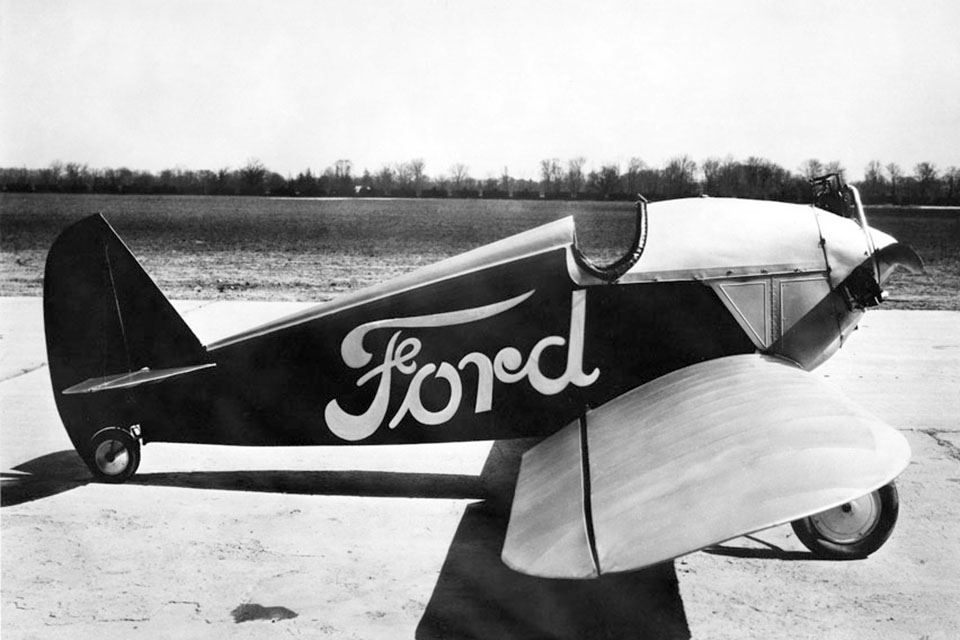
There was even a brief Pou craze, in England particularly, and it was in many ways equivalent to the sudden popularity of Rogallo-wing hang gliders and then their inevitable descendants, powered ultralights, in the United States in the mid-1970s. Nearly all unlicensed, unregulated hang gliders and ultralights were built by enthusiastic and often unskilled amateurs and were flown by nonpilots. Quite the same could be said of the Pous du Ciel.
The dream of Everyman’s Airplane has been around a long time, and it persists to this day. In the late 1920s, Henry Ford’s Flying Flivver, a 35-hp single-seater, was intended to sell for the price of a Model T. Only three were built, and one crashed fatally. Ford then lost interest.
In 1933 the Bureau of Air Commerce, headed by Eugene Vidal, a World War I pilot and the father of writer Gore Vidal, declared that the United States would sponsor a contest to develop a “poor man’s airplane” to sell for $700 (about $10,800 in 2006 dollars). It produced several light designs and much unrealistic enthusiasm.
In the 1960s, Cessna, even then the world’s largest lightplane manufacturer, declared that its new tricycle-gear designs were so easy to fly that all you had to do was “drive them up, drive them back down.” Ads depicted Dad in a fedora driving Mom and the kids off to dinner in the big city in their new Skylane.
My own first airplane was an Ercoupe, a stall/spinproof, rudder-pedalless little twintail scooter that nonetheless suffered an embarrassing accident rate because it could be made to sink like a dropped anvil during a landing approach, sometimes without enough altitude to recover. Even today, NASA is working on a program to produce the general aviation airplane of the future, which will fly almost automatically along “highways in the sky,” with a variety of electronic datalinks handling navigation, weather avoidance and IFR flight.
But Henri Mignet was the first to seriously approach the challenge of an Everyman’s Airplane—and he too ran into a fatal flaw. He persuaded the regulatory bodies in both France and England to exempt the Pou from any testing, stress analysis or certification procedures, as long as its pilots carried third-party insurance and stayed out of the way of “real airplanes.”
But then there were several fatal crashes in France. They were attributed to pilot inexperience. As Pous became all the rage in England during the mid-’30s as well, however, a Royal Air Force squadron leader died when his Pou dived straight into the ground. Obviously inexperience wasn’t the excuse after all.
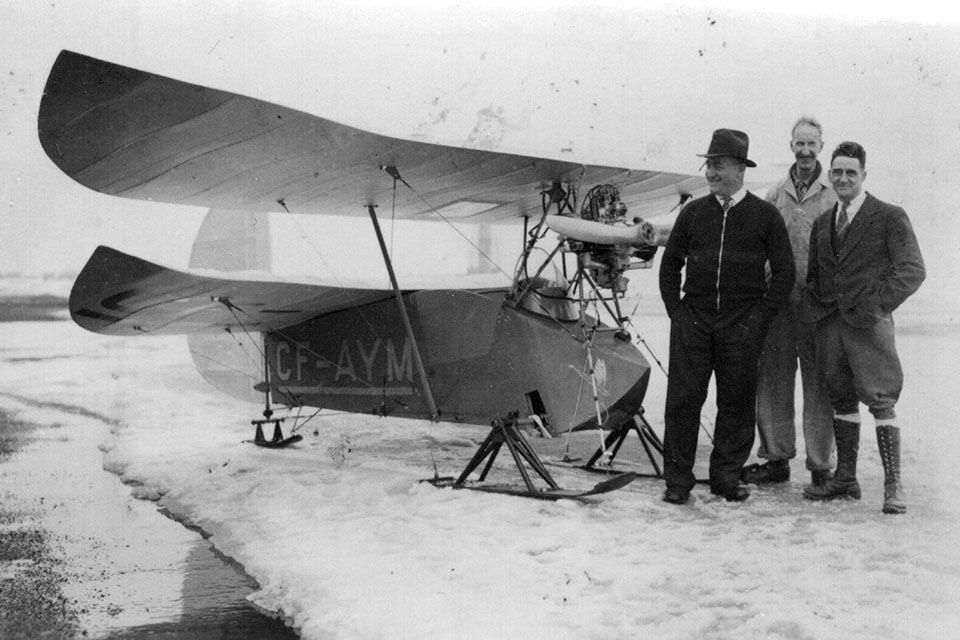
Eleven Pou pilots died before the reason was discovered: Mignet had designed the original Pou with a wing that could effect a substantially negative angle of incidence, so that airflow hit the top of the airfoil rather than the leading edge or undersurface, as an airfoil is intended to operate. “The aircraft [then] tries to assume a stable attitude,” one aviation writer pointed out. “This means that it tries to fly inverted.” Not good.
Mignet corrected the design error, but it was too late. The Pou was banned in both France and Britain. His double-wing, tailless designs would forever be known as killers. Even though dozens are flying to this day, the stigma was permanent.
Mignet’s son, Pierre, continued his work designs, including a version that the French army bought in the 1990s as a low-tech, roadable battlefield scout plane; it was also used as a forest-fire spotter. Other homebuilders and innovators made improvements as well, and a variety of modernized Pous are still being built and flown in Europe and the United States. Complete construction plans for the original HM-14 (safely modified) and several follow-on versions are still readily available.
The most comprehensive single source of Pou du Ciel information in English is the Web site www.flyingflea.org.
Originally published in the July 2007 issue of Aviation History. To subscribe, click here.

